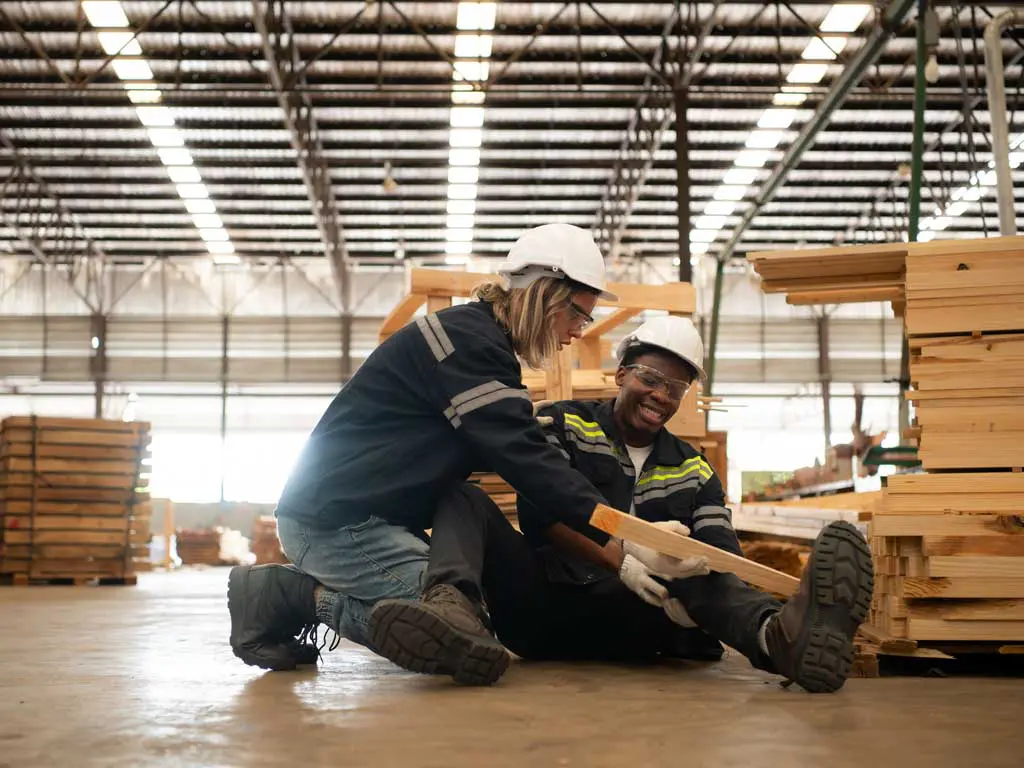When a body part is crushed between two objects, the resulting injuries can be severe, including internal bleeding, broken bones, torn muscles and ligaments, and debilitating nerve damage. A person with a crushing injury may require extensive medical treatment and time off work while recovering.
However, you may be entitled to compensation for your medical expenses, pain and suffering, and lost wages if someone else’s negligence caused your crush injuries. Damages and causes of these injuries can be extensive, including car crashes, forklift accidents, and poorly fitted safety guards on heavy machinery. Working with a catastrophic injury lawyer from Munley Law can help you secure the monetary compensation you need to move on with your life.
$32 Million Wrongful Death
$26 Million Truck Accident
$20 Million Commercial Vehicle Accident
$17.5 Million Car Accident
$12 Million Work Injury
$11 Million Truck Accident
$9 Million Truck Accident
$8 Million Truck Accident
$8 Million Truck Accident
$7.5 Million Auto Accident
$6.9 Million Garbage Truck Accident
$6.5 Million Traumatic Brain Injury
Common Causes of Crush Injuries
Crush injuries tend to result from highly preventable accidents. That makes them all the more likely to have been caused by another person’s negligence. Some of the common causes of these injuries that our crush injury lawyers see include:
-
Car Crashes: When collisions between vehicles or pedestrians occur, a person can get pinned by a car or trapped inside, suffering broken bones or even traumatic amputations
-
Forklift Accidents: Common with construction site accidents and at warehouses, forklifts run by inattentive drivers may collide with workers, run over them, or even pin them to a wall.
-
Industrial Machinery Incidents: Moving parts in industrial machinery make crushing injuries all too common, which is why your company should be following guidelines to avoid OSHA violations. If moving parts are not properly fitted with safety equipment or with an emergency stop or safety trip control device, they can catch and crush appendages.
-
Dropped or Fallen Objects: Workers involved in construction site accidents or other laborers are at risk for crush injuries when materials such as tools, equipment, bricks, or other heavy items unexpectedly fall from heights. Warehouses and cargo loaders can be crushed under heavy boxes, freight items, or pallets if they’re not properly secured
-
Crowd Surges and Other Crush Incidents: Even the crush of bodies in a crowd surge at a concert can cause crush injuries. An example is if someone in a crowd falls without others noticing. They may get trampled by the crowd, receive traumatic injuries, or even die from the incident
Crush injuries range in severity from minor bruising and fractures to broken bones, torn muscles, and disfigurement. Injury victims often are left with temporary or permanent disability, requiring extensive medical treatment to regain the mobility they have lost. When this occurs, victims should seek help from personal injury lawyers to get proper compensation to cover their continuing recovery and support them if they are unable to work again. At Munley Law, our lawyers have recovered billions of dollars in personal injury settlements and verdict awards for our clients.

What Is Compartment Syndrome?
After sustaining an injury, there may be a temptation to put ice on your swelling, assume that the bruises will fade, and move on with your life. However, you need to get a medical evaluation to be sure you do not have compartment syndrome. When too much pressure occurs around a muscle, blood flow can be restricted, causing the muscles, nerves, and blood vessels (referred to by the medical term compartment) to lose access to oxygen and nutrients.
Compartment syndrome can occur in almost any area of the body, but it’s common in the legs, arms, hands, wrists, and feet. Compartment syndrome can occur due to crush injuries and is more common around broken bones. According to the Cleveland Clinic, 10% of people who experience a broken tibia, or shin bone, will develop compartment syndrome.
Compartment syndrome, or crush injury trauma, generally occurs within a few hours of a crush incident, but symptoms can occur up to 48 hours after. Be on the lookout for “The Five P’s” of crush injuries, which can indicate pressure building up within a muscle, restricting blood flow, and possibly leading to tissue damage.
What Are the 5 P’s of Crush Injuries?
The 5 P’s of crush injuries include the following symptoms:
-
Pain: While any injury is typically accompanied by some pain, pain associated with compartment syndrome will be severe and more than would be expected based on the injury.
-
Pallor: Due to the restricted blood flow that occurs with compartment syndrome, injured persons may experience a loss of color from the skin, creating an unhealthy paleness.
-
Paresthesia: Often referred to as “pins and needles”, paresthesia is common with nerve compression injuries, creating a numbness, burning, itching, and painful sensation. This is a sign of nerve irritation or damage and should not be ignored.
-
Paralysis: Often occurring as a late-stage symptom, paralysis can occur if blood flow has been restricted enough, damaging nerves and muscles.
-
Pulselessness: A weakened pulse or no pulse at all may be present, a sign that irreversible damage may be occurring —this is associated with amputation risks.
Always seek medical care after a crush injury to determine if you have any of these symptoms. Medical intervention is essential to prevent permanent damage to nerves and muscles. Even if you’re unsure if your pain or paresthesia is normal for the injury you sustained, getting a medical evaluation will help to link any injuries with your accident directly, creating a track record to be used as evidence in future insurance claims, workers’ compensation claims, or personal injury lawsuits.
What Damages Are Associated With a Crush Injury?
Based on the severity of your injuries, the cost of your recovery, and the amount of negligence the at-fault party showed, your settlement could range widely in value. Your personal injury lawyer can help you calculate past and future expenses, which is essential if you are still recovering or may have further losses. You only get one chance to agree to a settlement, so don’t undervalue your claim by trying to calculate it yourself or agreeing to the first offer insurance provides.
Compensation is typically broken up into two types: economic damages and non-economic damages. Economic damages are associated directly with a monetary amount and will cover expenses such as hospital stays, medical care, rehabilitation costs, surgeries, lost pay due to time off work, and any other out-of-pocket costs related directly to your injuries. At Munley Law, our lawyers also bring in experts who can assist with assessing future medical costs and required services, if necessary.
Non-economic damages are real, felt losses that are not directly tied to a financial amount. This type of compensation covers things like pain and suffering, mental anguish, and loss of the ability to participate in life activities and hobbies you once enjoyed.
Workers’ Compensation Claims and Other Types of Compensation
When determining what kind of damages you might expect from a crush injury, you need to decide which type of claim you’re filing. If you are a worker injured on the job, you will likely be pursuing workers’ compensation benefits. However, if you were injured by someone who is not your employer, you may need to file a claim for third-party liability or a direct insurance claim with the at-fault party. Your catastrophic injury lawyer from Munley Law can help you investigate what type of claim you should pursue based on the exact details of your case.

Contact Our Legal Team to Discuss Crush Injuries: Damages and Causes
Call us to shedule a free, no-obligation case review to obtain the money you need to help fund your recovery. One of our experienced lawyers can walk you through the process of an insurance settlement, personal injury lawsuit, or workers’ compensation claim. Don’t risk missing out on compensation for your injuries and pain. We are here to help you regain your life after a crush injury and we can start today.









